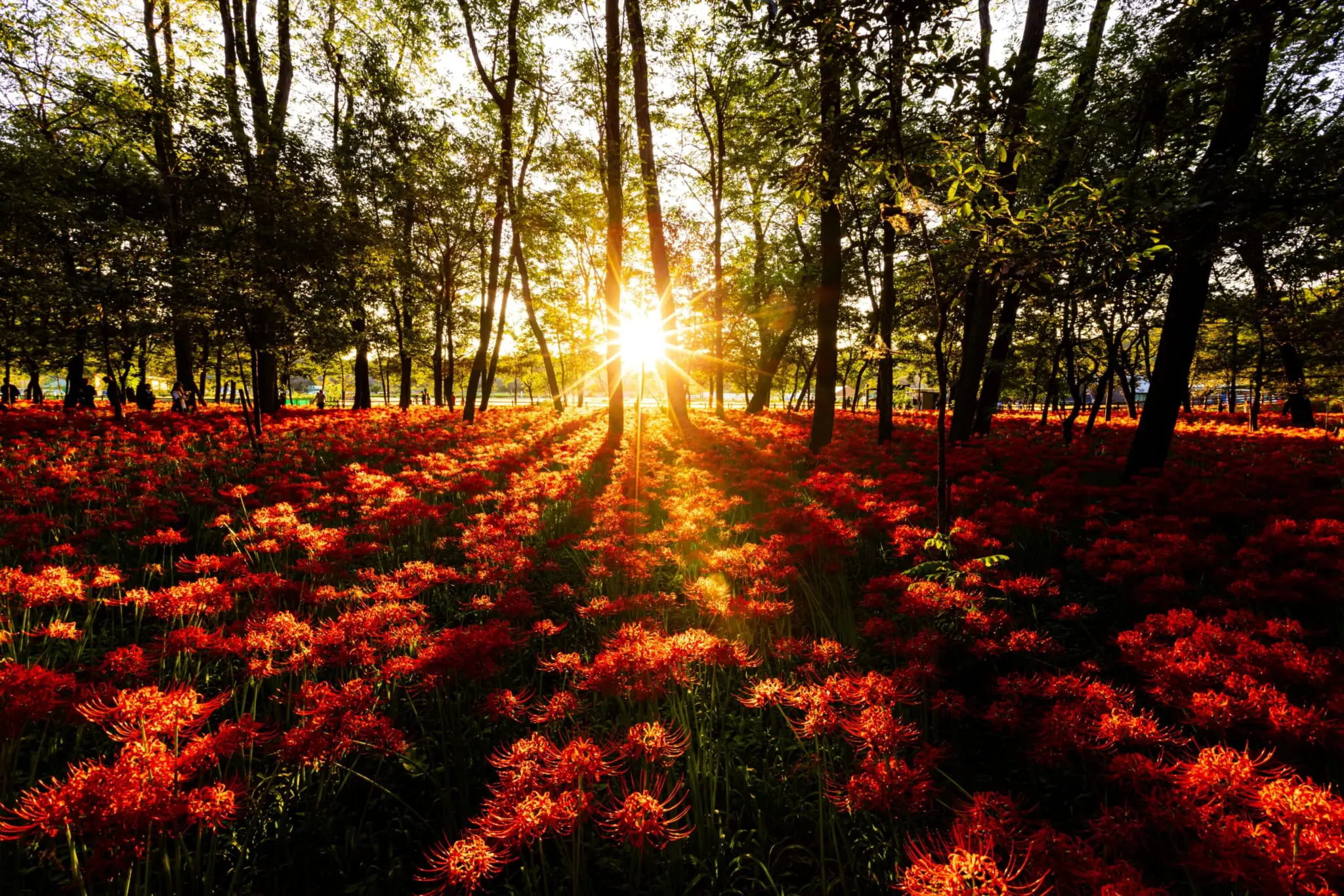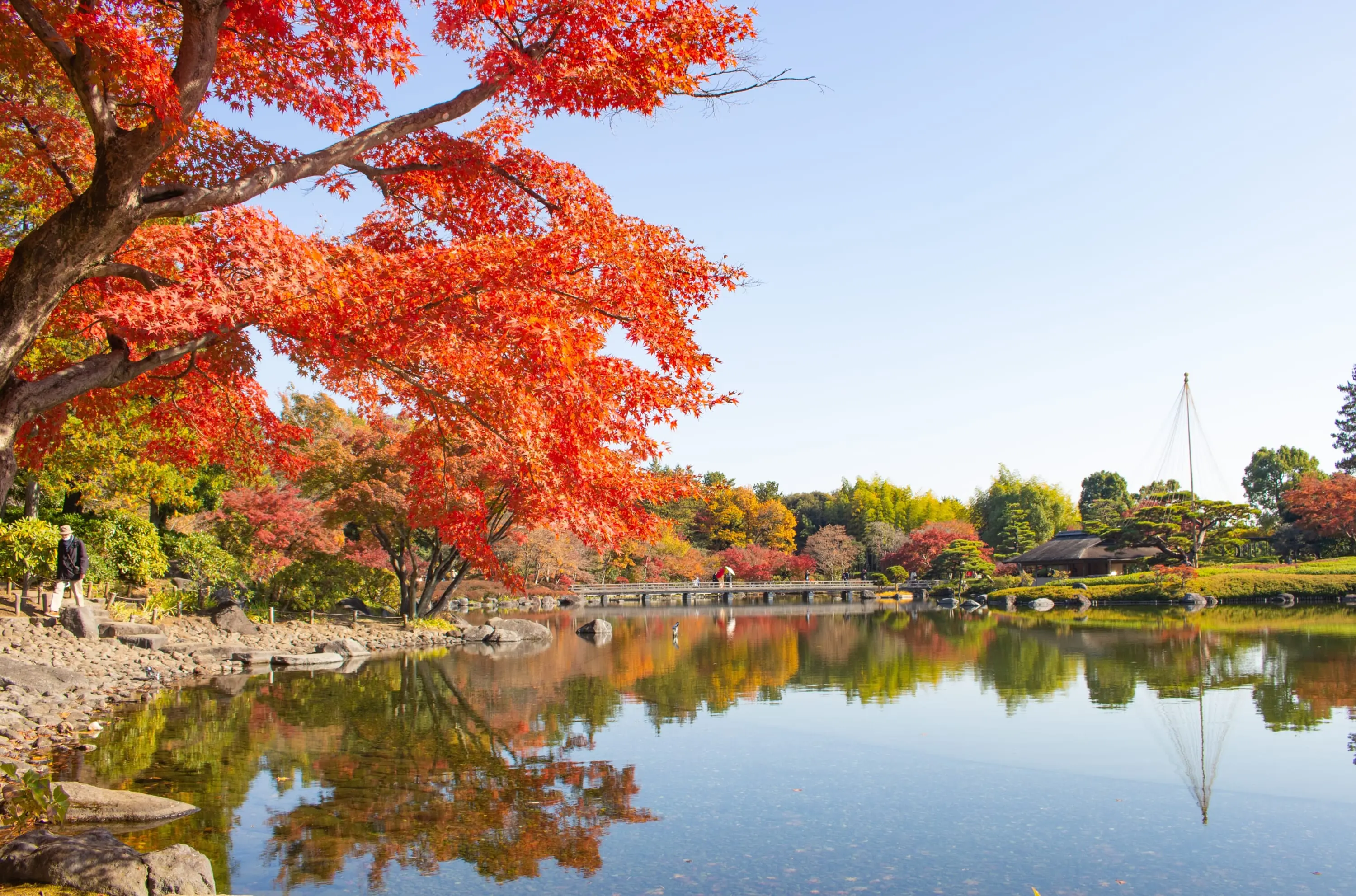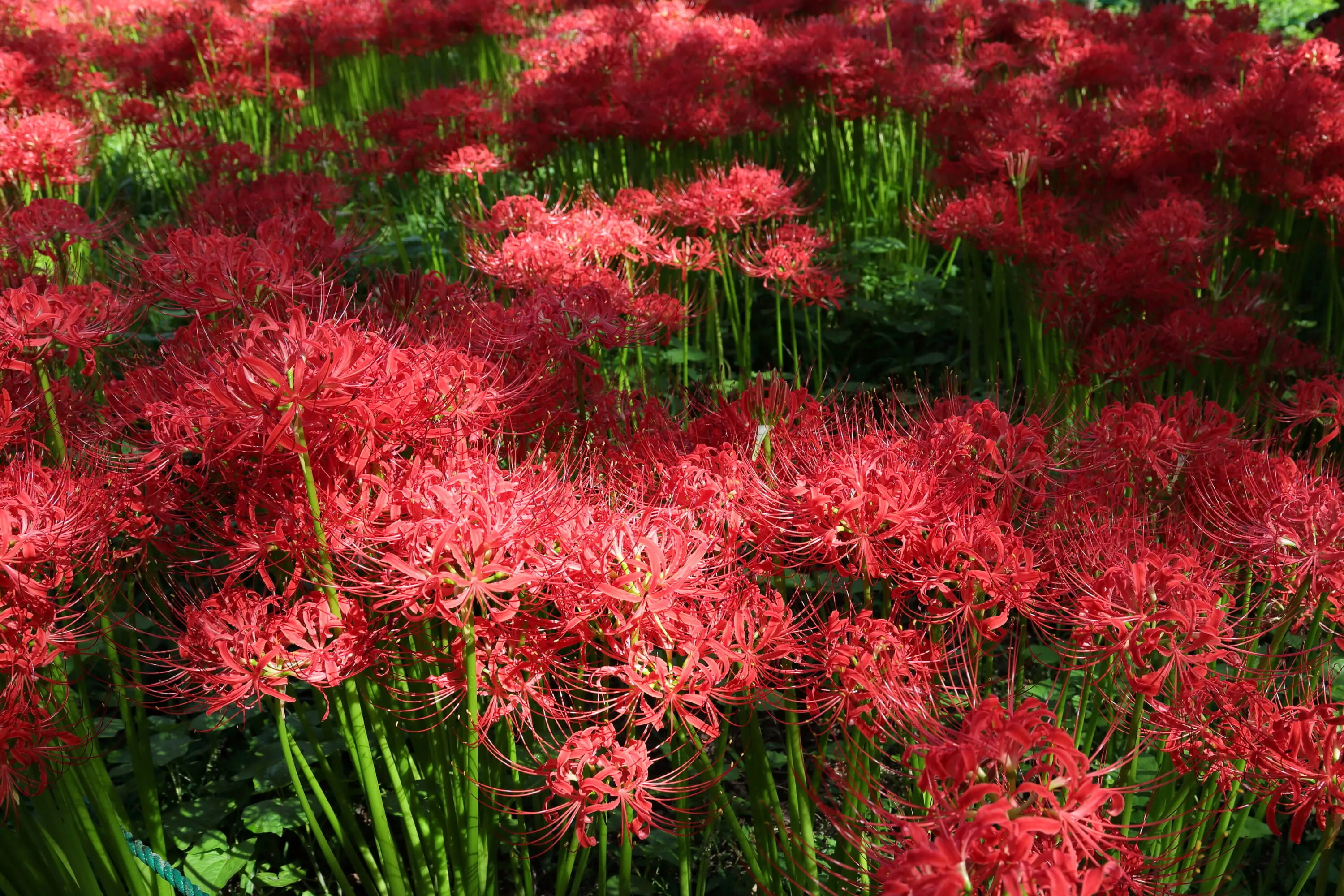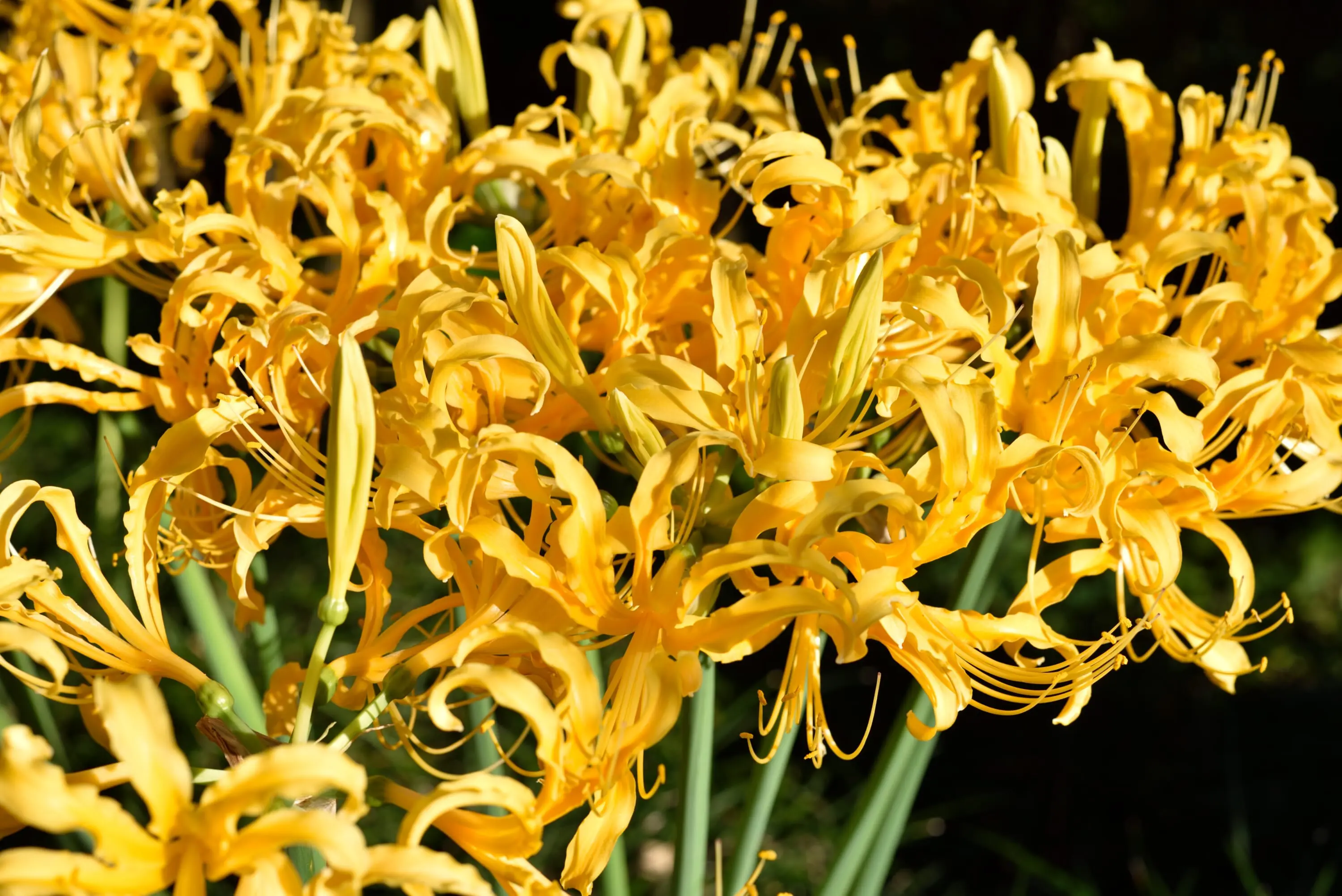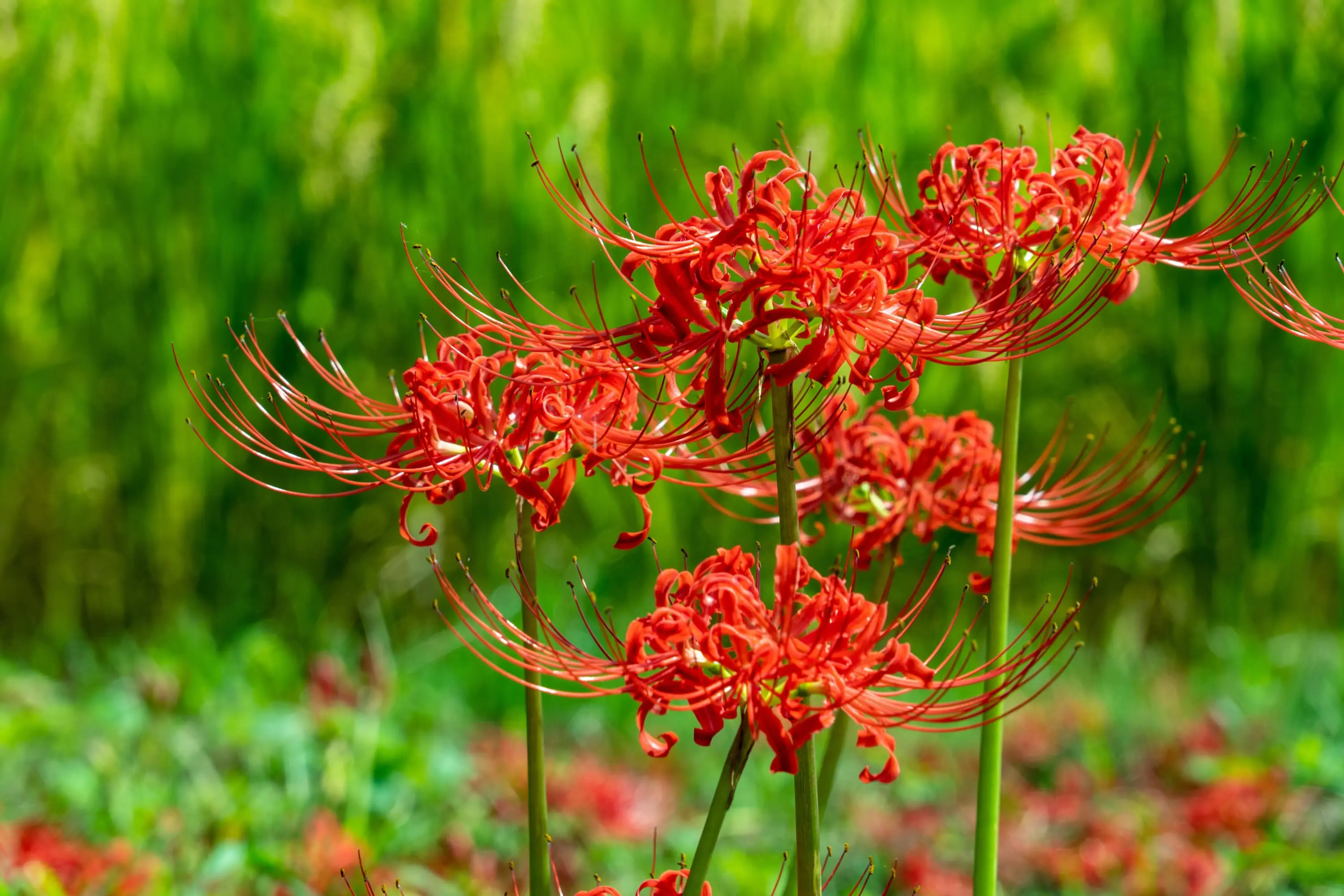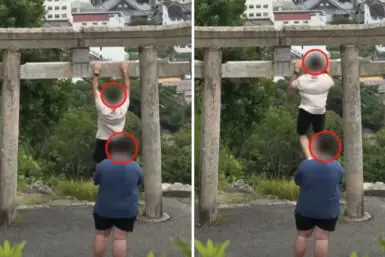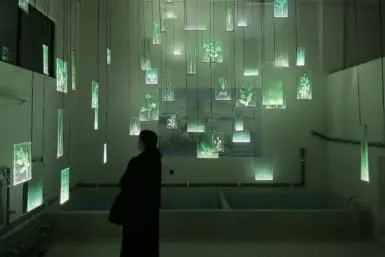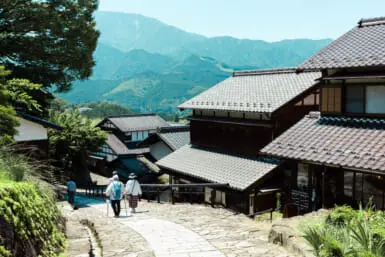Beyond Japan’s iconic autumn foliage, there’s another natural wonder often overlooked: the spider lily, known as higanbana or manjushage in Japanese. These vibrant flowers bloom in late summer to early fall and the name reflects this, with the autumnal equinox known as higan.
The toxicity of spider lilies also makes them a natural deterrent to pests and animals near temples and graveyards, leading to their association with death and the afterlife. Renowned for their macabre beauty, these fiery blooms have even made multiple appearances in anime such as Demon Slayer and Tokyo Ghoul.
From serene temples to sprawling parks, find out the best places to witness higanbana blooming. And the best part? Many of these spots are just a short trip from Tokyo, so read on for the details.
Spider Lilies in Tokyo Prefecture
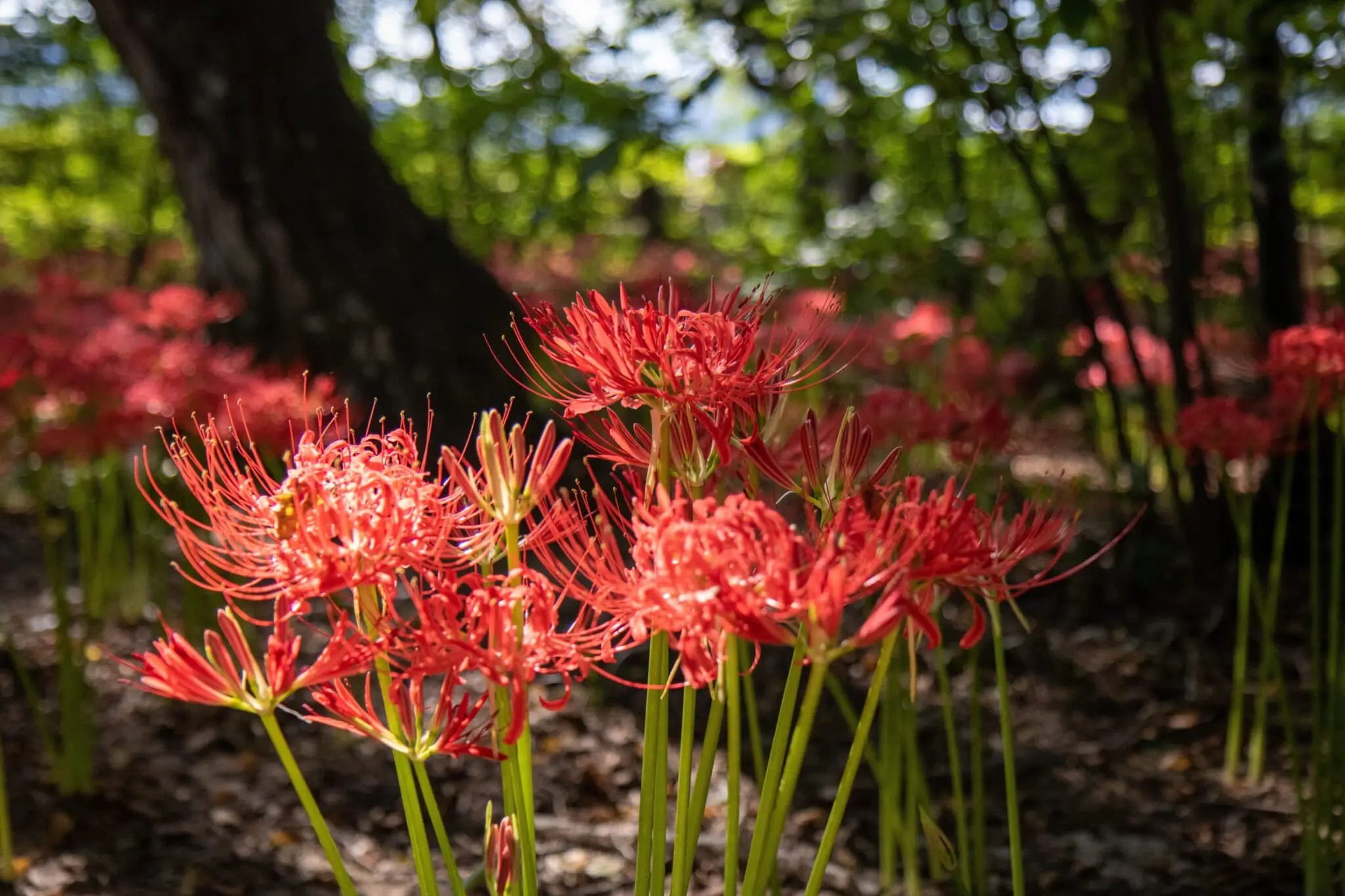
1. Koishikawa Korakuen Garden
Just a short walk away from Iidabashi Station and Tokyo Dome, Koishikawa Korakuen Garden is one of the oldest and best preserved Japanese-style gardens in the capital. Dating back to the early Edo period, the garden boasts ponds, hills and plenty of higanbana sprinkled along the banks of streams and pagodas. Near the east entrance, don’t miss the grove of ginkgo trees, which transform into a breathtaking golden spectacle in autumn.
2. Showa Kinen National Park
Located west of Tokyo in Tachikawa city, Showa Kinen National Park was established in 1983 to commemorate the 50th anniversary of Emperor Showa’s reign. While renowned for its cherry blossom trees and autumn foliage, the park also offers a breathtaking display of spider lilies in late summer and early fall. Clusters of these red blooms can be found in Komorebi Village, a nostalgic recreation of a 1950s rural landscape, as well as around Komorebi Hill and Fureai Bridge.
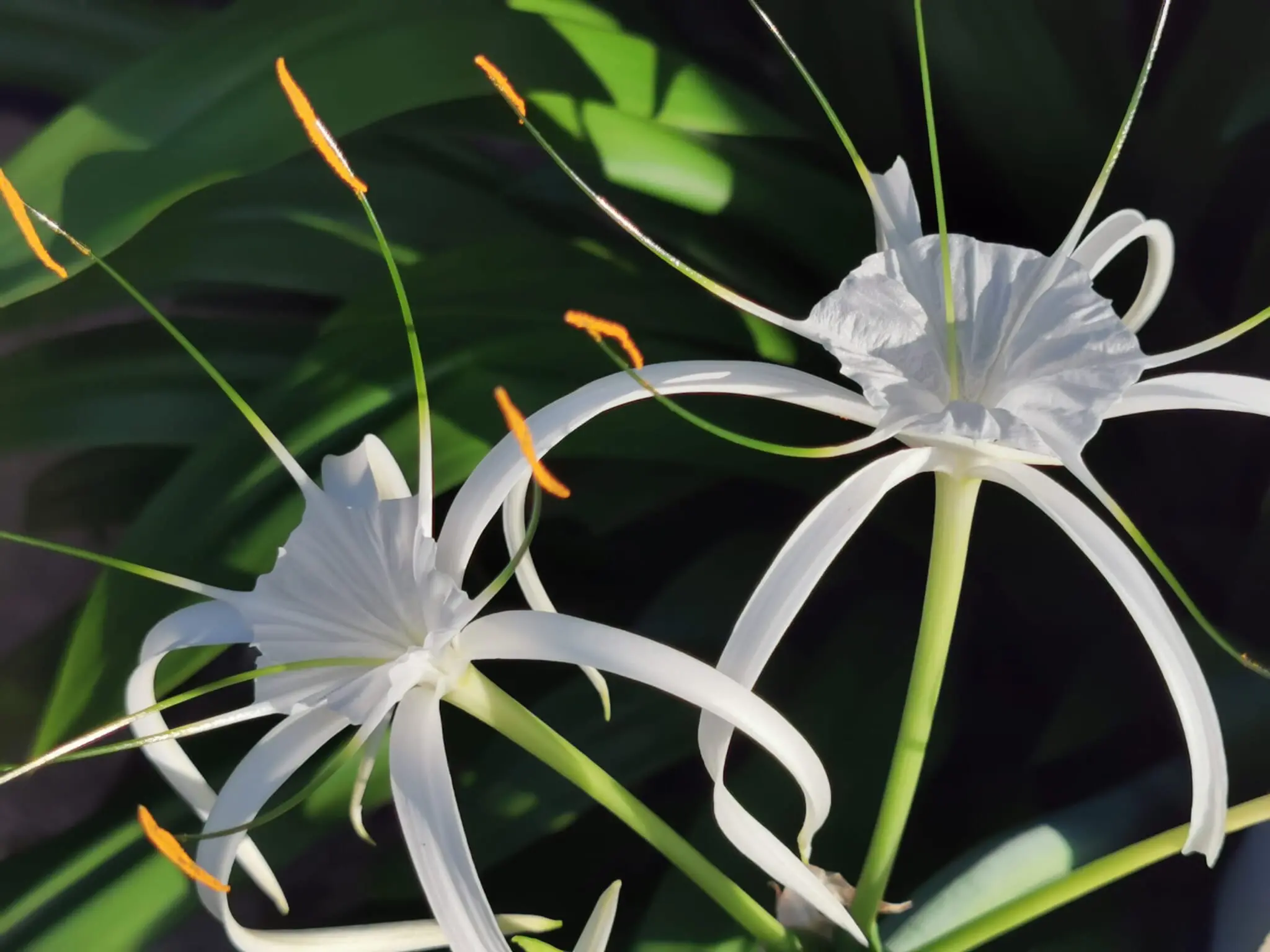
3. Kyodo no Mori Historical Museum
Kyodo no Mori Historical Museum, a sprawling open-air museum in the western suburb of Fuchu, features preserved buildings from various eras of Japanese history, ranging from traditional farmhouses to merchant houses. This expansive complex also boasts 400,000 spider lily bulbs in both red and white. The museum’s annual manjushage festival, now in its 70th year, takes place on weekends and holidays until October 6. Don’t miss the chance to explore the museum and enjoy the intricate amezaiku candy sold at the festival stalls.
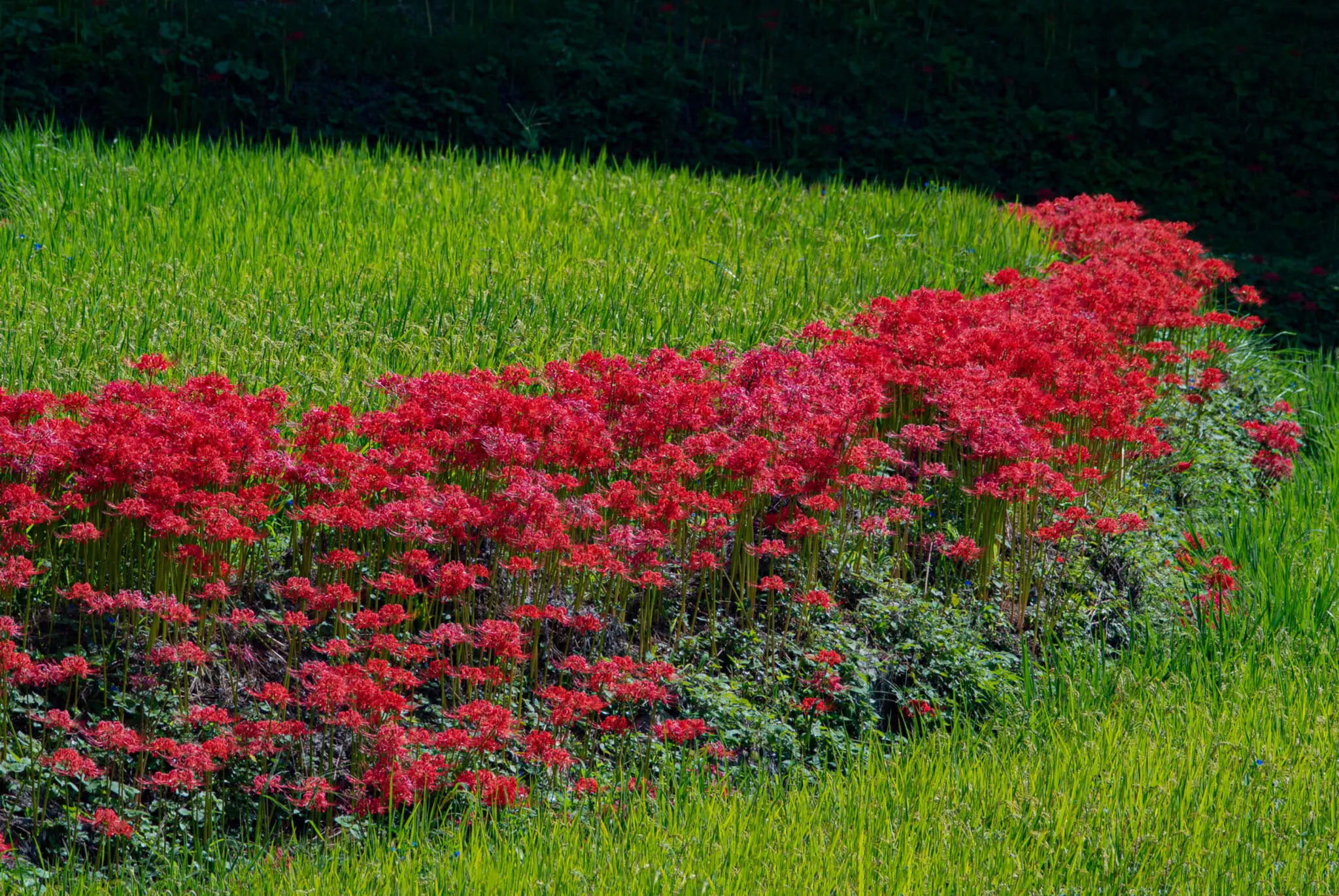
4. Nogawa Park
Tucked away in Mitaka city, Nogawa Park is a popular retreat for locals, offering an array of walking trails, sports facilities and barbecue sites along the Nogawa River. After enjoying a leisurely picnic on the expansive lawns, head to the Nature Observation Garden for a breathtaking sight: a sprawling carpet of fiery red higanbana as well as rare white spider lilies dotting the scene.
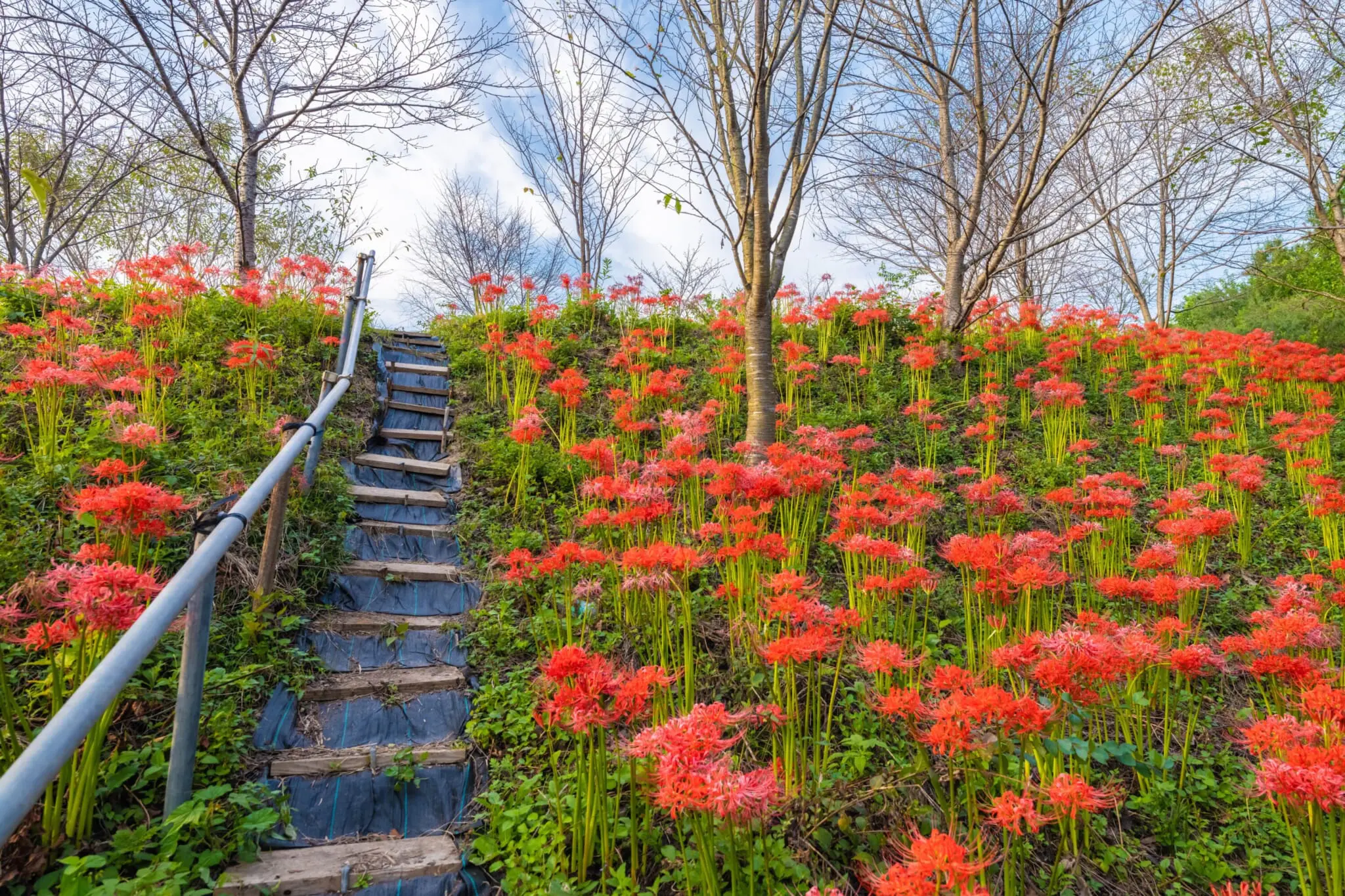
5. Mizumoto Park
Beyond its iconic cherry blossoms and waterfront views that are perfect for bird-watching, Mizumoto Park offers a hidden gem for photographers and nature lovers in late summer and early fall. This expansive park features a dedicated area known as Higanbana Hill, where vibrant red spider lilies bloom in spectacular fashion. You will also find clusters of spider lilies along the footpaths and on the path leading to Katori Shrine.
Spider Lilies in Saitama Prefecture
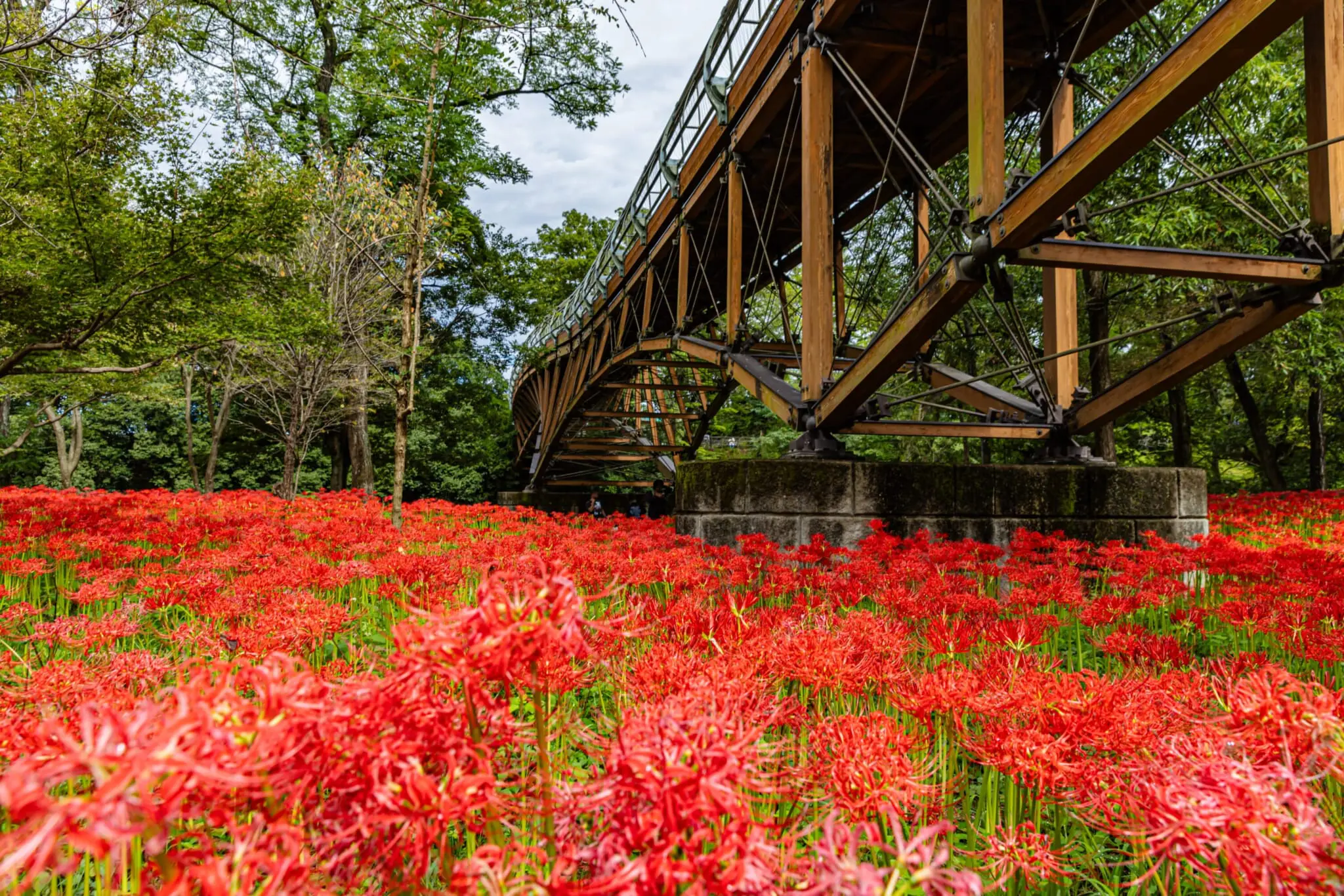
6. Kinchakuda Manjushage Park
If you’re looking for the most impressive display of spider lilies in Japan, look no further than Kinchakuda Manjushage Park in Hidaka city. Kinchakuda, meaning “pouch field,” aptly describes the park’s central plain nestled amid the flowing Koma River and its surrounding waters. During peak season, a whopping 5 million manjushage bloom simultaneously, transforming the park’s central area into a shade of stunning crimson that stretches as far as the eye can see. From September 8 to October 2, take the chance to snap up Instagrammable shots at the park’s Manjushage Festival and enjoy stalls selling fresh produce and specialties from Hidaka.
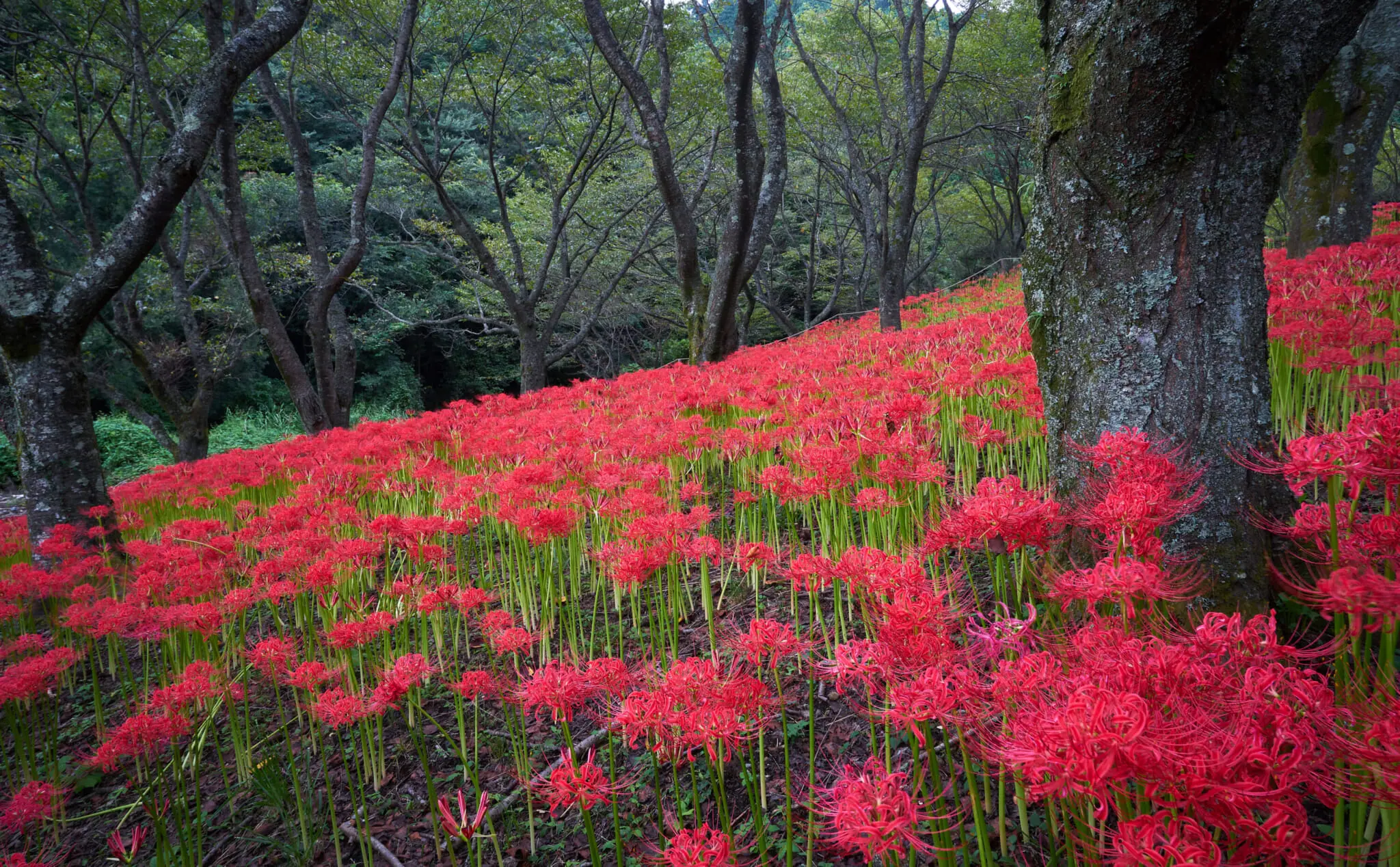
7. Kenei Gongendo Park
Home to over 3 million spider lilies, Kenei Gongendo Park in Satte city is a feat not to be missed. At the Satte Manjushage Festival, held annually from mid-September to early October, the higanbana blooms blanket the hills and the park transforms into a breathtaking spectacle. Entry to the park is free, and you can also stop by the Toge no Chaya (teahouse), where you can sample homemade bread and specialties from Satte.
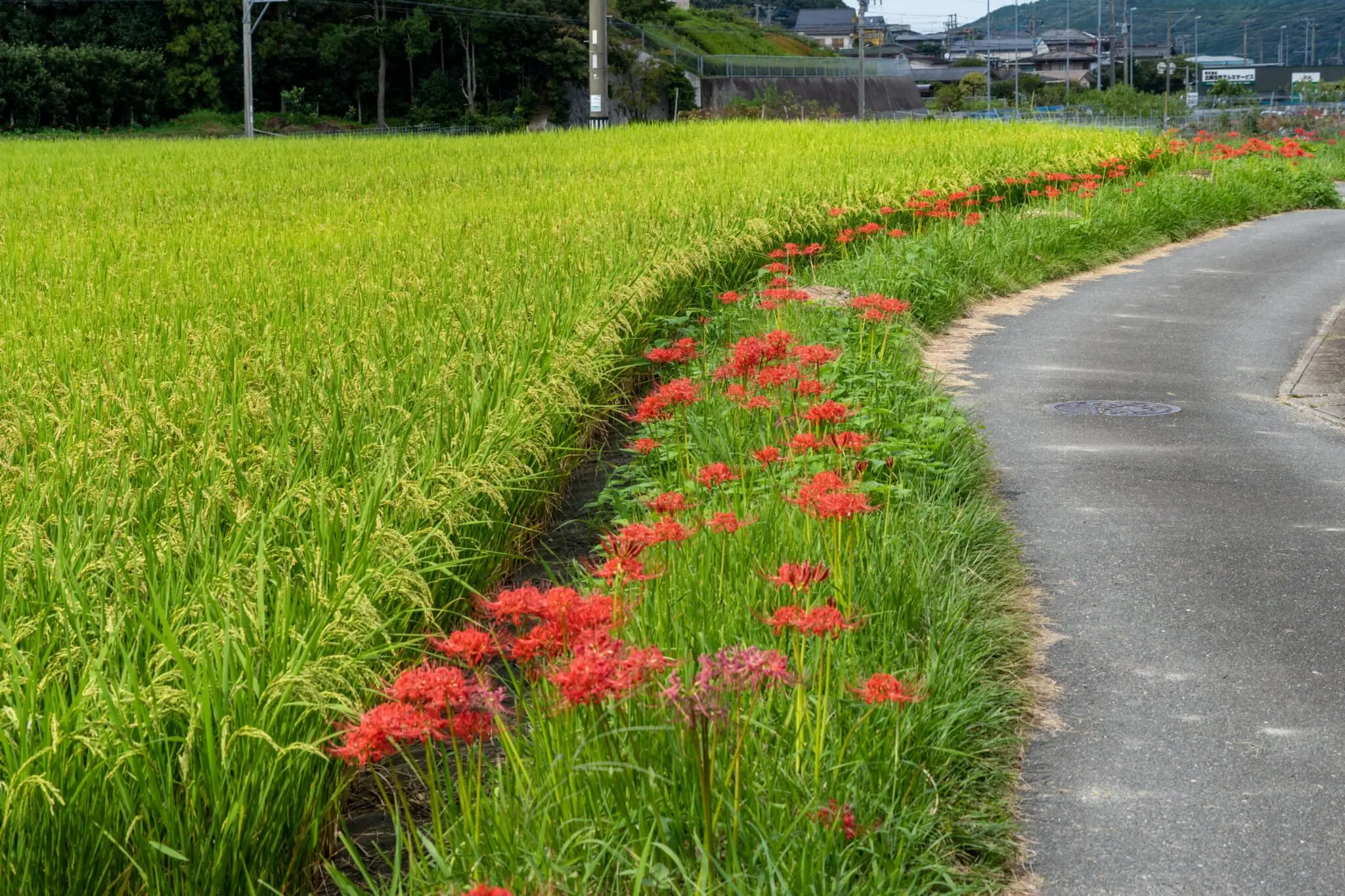
8. Tenjin Bridge
Popular with photographers and cyclists, the grassy area around Tenjin bridge is known for its beautiful display of higanbana in autumn. To find them, just walk along the embankment on either side of the bridge, and you’ll likely see them growing in clusters along the riverbank. Continue walking down along the Oppe River, and you’ll come across Kinbue Soy Sauce Park, where you can grab a bite to eat.
Bonus: Spider Lilies in Ibaraki Prefecture
9. Gugyoji
For those who don’t mind venturing a bit further for stunning views of higanbana, your best bet would be planning a day trip to the city of Joso in Ibaraki Prefecture. Gugyoji Temple is home to 50,000 spider lilies, and you will also find rare white and yellow varieties scattered among the premises. The temple also holds a significant historical connection as the final resting place of Senhime, the daughter of the shogun Tokugawa Hidetada. While it was believed only her hair was interred at the shrine, renovations in 1997 revealed her bones were also buried on the temple grounds.

